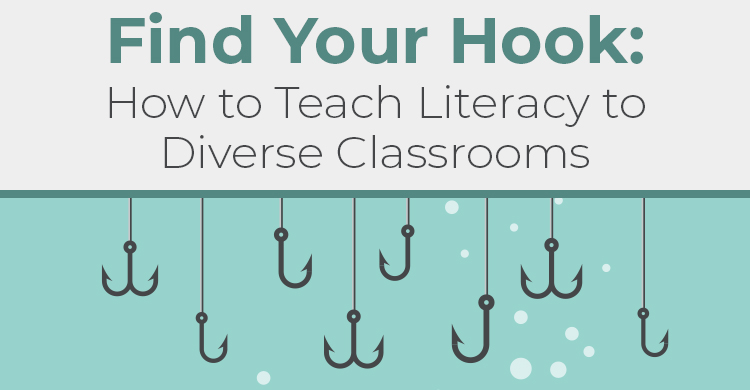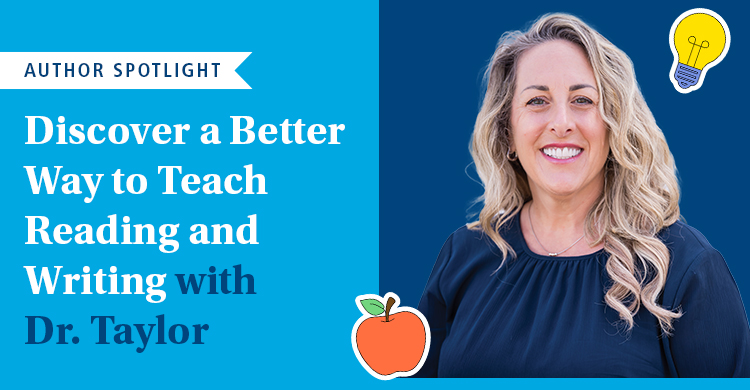Over the years, classrooms across the country have seen an increase in student diversity. This means teachers must adapt to a wider range of learning needs, which impacts student acquisition of early literacy skills. As educators, we often ask ourselves how we can effectively meet the needs of all our students. Our classrooms now include students from different cultures; students with different cognitive, emotional, and academic needs; and students with potential language or dialectical barriers. Many of these learners require new intervention methods or assistance from coaches, counselors, and intervention specialists.
Although some of these differences in how students learn may be obvious, too many go unnoticed, and traditional ways of learning to read may not be as naturally effective as we think. It is important to recognize that our brains are not wired to read. Reading has to be taught. Through my research, I have learned that it is easier for us to learn when we give our brains a hook to hang new information on. When we use cultural touchstones or familiar connections to forge a neural pathway back to the lesson. This process taught me to use culture as a “hook” that shapes the brain.
Understanding the amazing ways culture affects learning
Throughout history, civilizations have developed diverse cultural practices that continue influencing our societies. Here are some ways we have learned to utilize culture:
- Cultural communication: Language, social norms, and customs are significant components of our heritage that allow us to interact effectively within our communities.
- Cultural expression: Culture provides a platform for individuals and communities to express themselves creatively through music, literature, painting, and dance.
- Cultural identity: Students’ backgrounds, values, traditions, and customs inherited from previous generations shape their sense of self.
- Cultural preservation: Preserving a society’s identity and memory through documentation, artifacts, and oral traditions safeguards our history for the future.
- Cultural adaptation: Culture is not static; it evolves and adapts in changing circumstances to suit contemporary needs.
When it comes to using culture as a hook to guide interventions with struggling readers, consider these five tips:
- Generate enthusiasm among students by immersing them in literature that is rich in cultural content.
- Respect and acknowledge the diverse learning experiences of our readers. A perfect example of this practice comes from the Listen First Project.
- While reading stories, students examine their worldview and interpretation of literature by asking questions from the social structure and the governance structure: Who am I to other cultures in this world? Who am I to the people in my culture?
- Teachers use reciprocal teaching to move students through the text. Four strategies—prediction, clarifying, questioning, and summarizing—will improve students’ attention, focus, and memory.
- After reading a passage or selection, the question-answer relationship strategy helps students understand the different types of questions: By learning that the answers to some questions are right there in the text, that some answers require a reader to think and search, and that some answers can only be answered on their own, students recognize that they must first consider the question before developing an answer and become consciously aware of these questions while they are reading.
How to leverage cultural neuroscience in literacy instruction
Incorporating cultural elements into reading intervention can be a powerful tool in supporting
struggling readers.
A teacher’s learning style often differs from their students’, and sometimes, teachers may mistake this difference as a lack of capabilities on the part of their students. Students are frequently placed in a one-size-fits-all or scripted learning environment, which can slow down the progress of targeted skill instruction, or in groups reviewing material that they already know, thus creating an academic and equity gap. Tiering of instruction does not happen for many students across the country.
Tiering is an instructional practice that allows students to journey toward grade-level standards. Tier 1 is the general classroom. Tier 2 is the tutoring and intervention of basic skills. And Tier 3 is intensive individual intervention and other supports. Traditional tiering is a great start, but there will be a time when schools will want to subdivide tiers to meet a wider variety of instructional or behavioral needs. Looking at the demographics and needs of students is important, and thinking outside the box must become normal if teachers believe that every student is deserving of the opportunity to work on the targeted skills and grade-level materials that will close their academic gaps.
How to adapt to the individual strengths of diverse students
As diversity grows in the classrooms, teachers must address students’ individual strengths and provide alternative approaches to acquiring knowledge. By incorporating differentiated learning, project-based learning, and cooperative/collaborative group activities into the teaching methods, teachers can increase the chances of reaching students who may otherwise be left behind by our traditional instructional techniques.
When teachers adapt and respond to the diverse needs of students, they create a more inclusive and equitable learning environment that benefits all students. It is important that students and teachers develop a deeper understanding of concepts.
The following Diversity Observation Checklist (Figure 1) can be used to support teachers, coaches, and interventionists in recording the behavior characteristics of students as they perform tasks in their reading. The responses will give clues to help identify the types of learners in a classroom. Most importantly, this chart will help professional learning community teams to look for ways to support students and think in ways that match their strengths. Insert students’ names or initials beside some items to remind them of who matches certain behavioral characteristics.
Figure 1 Diversity Observation Checklist
| Student NamesInitials | Yes/ No | Observation of Behaviors |
| Listen attentively in class but can’t read well | ||
| Work well alone | ||
| Need hands-on experiences in order to learn | ||
| Can’t sit still and always moving around | ||
| Doodling consistently on paper | ||
| Impulsive | ||
| Always talking to someone | ||
| Are timid about answering in class but do good work | ||
| Can express ideas by drawing but not by writing | ||
| Are star athletes but don’t seem interested in class | ||
| Show leadership qualities when in group situations | ||
| Seem bored by assignments but show creativity in their work | ||
| Are always asking questions and seeking answers | ||
| Think methodically and logically | ||
| Read avidly and love to discuss the books they’ve read | ||
| Solve math problems quickly and easily | ||
| Ask Why? questions | ||
| Brings home life into the classroom with anyone asking |
In classrooms across the country, diversity is all around. Students differ in physical, emotional, and mental capacities, language and cultural backgrounds, and ways of knowing. Awareness of how students learn and think in multiple ways enables teachers to provide a variety of instructional strategies that accommodate individual strengths. This cultural change goes beyond making teacher and content thinking visible. It is about making student’s minds and thinking visible to the teacher and themselves. Supporting culturally diverse literacy learners in the classroom exposes them to new ways of knowing and thinking. They now have a hook to hang their learning onto, and teachers recognize it.
For more on differentiated instruction and/or supporting diverse learners in the classroom, check out these free, handpicked resources from Solution Tree.
- Differentiated Reading Instruction: Multiple Pathways to Literacy Success [Blog]
- 4 Immediate Ways You Can Support Multilingual Learners [Blog]
- Embracing the Missing Link for Students Learning English as a Second Language [Collective Leadership Webinar]
About the educator
Gwendolyn Battle Lavert is an internationally recognized literacy specialist. She has been an educator since 1974 and has experience as a teacher, district literacy specialist, and district administrator in a variety of school settings.






